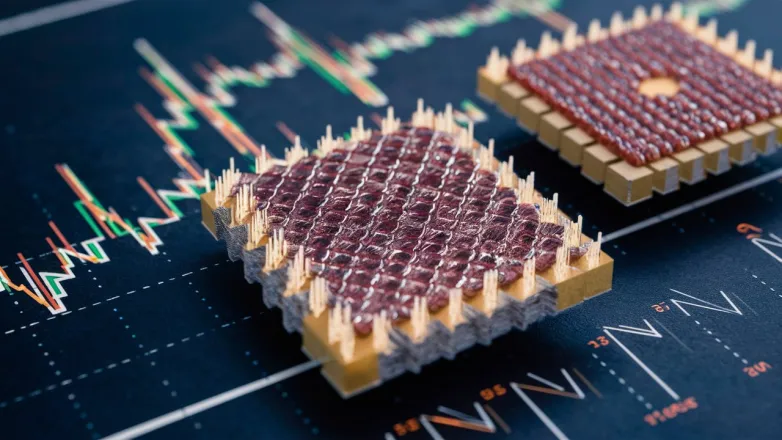Breakthrough Lead Carbanion Boosts Inverted Solar Cell Efficiency
- Revolutionizing solar technology, researchers unveil a groundbreaking inverted perovskite cell with a 25.16% efficiency, leveraging lead carbanion to tackle defects and maximize performance.

Researchers from NingboTech University and other institutions have developed an inverted perovskite solar cell featuring a lead carbanion (Pb–C–) interface passivator, achieving an efficiency of 25.16%—the highest open-circuit voltage recorded for such devices at 1.17 V. The lead carbanion layer reduces defects at the interface between the perovskite layer and the electron transport layer, addressing common issues like carrier recombination that hinder efficiency in conventional layouts.
Inverted perovskite cells, known for their stability, traditionally suffer from lower efficiencies due to energy loss at critical interfaces. The team's innovations include comprehensive analyses via photoluminescence mapping and scanning electron microscopy, confirming that the carbanion treatment minimizes defects and improves performance. Future research intends to explore other lead carbanion complexes, potentially broadening applications beyond solar photovoltaics.
How does the lead carbanion interface enhance inverted perovskite solar cell performance?
How the Lead Carbanion Interface Enhances Inverted Perovskite Solar Cell Performance
- Defect Reduction at Interfaces: The incorporation of lead carbanion (Pb–C–) passivators effectively diminishes defects at the junction between the perovskite layer and the electron transport layer (ETL). By smoothing out this interface, the likelihood of carrier recombination diminishes, thus enhancing the overall efficiency of the solar cell.
- Improved Charge Carrier Dynamics: The presence of the lead carbanion layer can lead to better charge carrier mobility within the solar cell. This improvement results in a more efficient flow of electrons and holes, which is critical for maximizing power output.
- Enhanced Open-Circuit Voltage: The study highlights that the use of the lead carbanion can elevate the open-circuit voltage (Voc) to unprecedented levels (1.17 V), which is a vital parameter in determining the overall efficiency of solar cells. A higher Voc typically translates to improved energy conversion efficiency.
- Stability Under Operating Conditions: Inverted perovskite structures are already recognized for their stability, but the introduction of the lead carbanion interface further fortifies their performance under various environmental conditions. This assurance of stability leads to longer lifespan and reliability of the solar cells.
- Photoluminescence Mapping Insights: Utilizing advanced techniques such as photoluminescence mapping, researchers can visualize how effectively the carbanion treatment reduces defects. This method allows for an in-depth understanding of the spatial distribution of charge carriers and informs optimization of the solar cell layers.
- Complementary Functionalities: The dual role of the lead carbanion in not only passivating defects but also possibly contributing electronic properties signals a multifaceted approach to enhancing solar cell performance. This multifunctionality can make the cell more adaptable to various operational environments.
- Potential for Broader Applications: The discoveries regarding lead carbanion complexes open avenues for research in other domains beyond solar energy, such as light-emitting diodes (LEDs) and optoelectronic devices. This versatility may create synergies in technology development across industries.
- Exploration of Other Carbanion Complexes: Future research directions suggest the examination of various lead carbanion complexes, potentially unlocking new configurations that may lead to even higher efficiencies. This exploration could identify alternative materials that offer similar or improved benefits for solar cell technology.
- Impact on Commercial Viability: Enhancing the performance characteristics of inverted perovskite solar cells substantially contributes to their commercial viability. As efficiency increases, the cells may become more appealing to manufacturers and investors, pushing forward the adoption of perovskite technology in the renewable energy market.
- Contribution to Renewable Energy Goals: Finally, advancements in inverted perovskite solar cell technology, propelled by innovations such as the lead carbanion interface, are crucial in the global pursuit of sustainable energy solutions, particularly as countries aim to meet ambitious renewable energy targets.
These enhancements underline the significance of continued research and development in the field of perovskite solar cells, particularly in the context of achieving higher efficiencies and better energy conversion.
Also read


